- Home
- Simon Kernick
The Last 10 Seconds
The Last 10 Seconds Read online
The Last 10 Seconds
SIMON KERNICK
Contents
Cover
Title
Copyright
Dedication
About the Author
Also by Simon Kernick
Today
Part One
Chapter One
Chapter Two
Part Two
Chapter Three
Chapter Four
Chapter Five
Chapter Six
Chapter Seven
Chapter Eight
Chapter Nine
Chapter Ten
Chapter Eleven
Chapter Twelve
Chapter Thirteen
Chapter Fourteen
Chapter Fifteen
Chapter Sixteen
Chapter Seventeen
Chapter Eighteen
Chapter Nineteen
Chapter Twenty
Chapter Twenty-one
Chapter Twenty-two
Chapter Twenty-three
Chapter Twenty-four
Chapter Twenty-five
Chapter Twenty-six
Chapter Twenty-seven
Chapter Twenty-eight
Chapter Twenty-nine
Chapter Thirty
Chapter Thirty-one
Chapter Thirty-two
Chapter Thirty-three
Chapter Thirty-four
Chapter Thirty-five
Chapter Thirty-six
Chapter Thirty-seven
Chapter Thirty-eight
Chapter Thirty-nine
Chapter Forty
Chapter Forty-one
Chapter Forty-two
Chapter Forty-three
Chapter Forty-four
Chapter Forty-five
Chapter Forty-six
Chapter Forty-seven
Chapter Forty-eight
Chapter Forty-nine
Chapter Fifty
Chapter Fifty-one
Chapter Fifty-two
Chapter Fifty-three
Chapter Fifty-four
Chapter Fifty-five
Chapter Fifty-six
Part Three
Chapter Fifty-seven
Chapter Fifty-eight
Chapter Fifty-nine
Chapter Sixty
Chapter Sixty-one
Chapter Sixty-two
Epilogue
This eBook is copyright material and must not be copied, reproduced, transferred, distributed, leased, licensed or publicly performed or used in any way except as specifically permitted in writing by the publishers, as allowed under the terms and conditions under which it was purchased or as strictly permitted by applicable copyright law. Any unauthorised distribution or use of this text may be a direct infringement of the author’s and publisher’s rights and those responsible may be liable in law accordingly.
Version 1.0
Epub ISBN 9781409094166
www.randomhouse.co.uk
TRANSWORLD PUBLISHERS
61–63 Uxbridge Road, London W5 5SA
A Random House Group Company
www.rbooks.co.uk
First published in Great Britain
in 2010 by Bantam Press
an imprint of Transworld Publishers
Copyright © Simon Kernick 2010
Simon Kernick has asserted his right under the Copyright, Designs and Patents Act 1988 to be identified as the author of this work.
This book is a work of fiction and, except in the case of historical fact, any resemblance to actual persons, living or dead, is purely coincidental.
A CIP catalogue record for this book is available from the British Library.
ISBN 9780593062869 (cased)
9780593062876 (tpb)
This book is sold subject to the condition that it shall not, by way of trade or otherwise, be lent, resold, hired out, or otherwise circulated without the publisher’s prior consent in any form of binding or cover other than that in which it is published and without a similar condition, including this condition, being imposed on the subsequent purchaser.
Addresses for Random House Group Ltd companies outside the UK can be found at: www.randomhouse.co.uk The Random House Group Ltd Reg. No. 954009
The Random House Group Limited supports the Forest Stewardship Council (FSC), the leading international forest-certification organization. All our titles that are printed on Greenpeace-approved FSC-certified paper carry the FSC logo. Our paper procurement policy can be found at www.rbooks.co.uk/environment
Typeset in 11/16pt Times New Roman by Falcon Oast Graphic Art Ltd. Printed and bound in Great Britain by CPI Mackays, Chatham, ME5 8TD
2 4 6 8 10 9 7 5 3 1
With thanks to my agent, Amanda Preston, and my editor, Selina Walker, for being such a huge help to me over the years.
Simon Kernick is one of Britain’s most exciting thriller writers. He arrived on the scene with his highly acclaimed debut novel The Business of Dying, and his big breakthrough came with his novel Relentless, which became the best-selling thriller of 2007. Simon’s research is what makes his thrillers so authentic. He talks both on and off the record to members of the Met’s Special Branch and Anti-Terrorist Branch and the Serious Organised Crime Agency, so he gets to hear first hand what actually happens in the dark and murky underbelly of UK crime.
Also by Simon Kernick
The Business of Dying
The Murder Exchange
The Crime Trade
A Good Day to Die
Relentless
Severed
Deadline
Target
For more information on Simon Kernick and his books, see his
website at www.simonkernick.com
Today
8.05 A.M.
An empty shell of a building deep in the heart of the city. It’s early, the first spears of bright sunlight advancing through the holes in the wall where the windows are meant to be, and here I am watching my blood form a visibly growing pool on the dusty concrete floor in front of me.
Propping myself further back against the wall, the gun still dangling precariously from my trigger finger, I concentrate on keeping my eyes open, forcing myself to focus on the carnage in this vast, empty room.
Three men dead. Two are lying sprawled on their fronts, arms outstretched theatrically, a dozen feet and hugely differing circumstances separating them. The third – a big man in a blood-drenched sky blue polo shirt and jeans, younger than the others – is bound to a chair with flex, his head slumped forward, his thick, sandy-blond hair bisected by a huge hole where the bullet exited.
Outside in the distance, I can hear the faint, drifting buzz of traffic. But it all seems so far away, and as I listen it seems to grow fainter, consumed by the leaden silence inside the room – a silence that seems to rise up from the floor like some dark, malignant force, extinguishing all the life around it. It’s going to extinguish me soon enough too. I’m bleeding to death, trapped on the third floor of this deserted place, a bullet in my gut, another in my right thigh, rendering the leg useless, a stiff coldness beginning to envelop me.
I’ve thought about death a great deal over the years, but always in a vague and abstract manner, never quite affording it the respect it deserves, even though I’ve skirted close to it on too many occasions.
But as I sit here, wounded and helpless, wondering how I’ve got myself into this terrible tomb-like place, I can hear death’s steady, inevitable approach and I know there’s no escape. That’s the hardest thing to accept, the fact that my life is finally coming to an end, and I wonder briefly in these last few seconds, as the pain and the shock squeeze at my insides, whether there’s anyone left to mourn my passing. Whether I’ll even be remembe
red in ten years’ time.
And then I hear it. A sound directly outside the door. The scrape of a foot on the floor.
Jesus. Is this nightmare still not over? Is there a final act to come?
I clench my teeth and slowly raise my gun arm, the effort almost too much to bear, thinking that I’ve fired five shots, so I should have one more left.
A shadow falls across the doorway and then, in an instant, a dark-haired woman in casual clothes is standing there, a warrant card in one outstretched hand and what looks like a can of pepper spray in the other. ‘Police!’ she shouts, her voice tight with tension as it echoes through the room.
She opens her mouth to say something else, her eyes wide with shock as they take in the scene of slaughter in front of her, before finally her gaze comes to rest on me.
This is when she frowns in startled recognition. ‘Sean?’
Even in my weakened state, I manage to crack something close to a smile. ‘Hello, Tina.’
‘What the hell’s happened?’ she asks, taking a step forward, ignoring the fact that I’m still pointing my gun at her.
And that’s when the shooting starts.
Part One
THURSDAY, 7 P.M.
37 HOURS AGO
One
He was short, maybe five seven, with a build that was either slim or scrawny depending on how charitable you were feeling, and he was dressed in cheap grey slacks, a neatly ironed white shirt, and a dark tie with an unfashionably small knot. His hair, dead straight and surprisingly thick, was the only thing unconventional about him, falling down like a medieval helmet to his shoulders. Otherwise he looked a perfectly ordinary, if slightly nerdish, young man. But then, in newly promoted DI Tina Boyd’s experience as a police officer, even the most brutal murderers tend to look just the same as everyone else.
As she watched from the back seat of the Kia Sorento, its blacked-out windows shielding her from the gaze of the outside world, thirty-two-year-old alarm engineer Andrew Kent walked by a pregnant woman, giving her the faintest of glances as he passed.
Andrew Kent. Even his name was ordinary.
He carried a small backpack slung casually over one shoulder and Tina wondered if it contained the tools of his illicit trade. Ten years ago, the thought would have made her visibly shudder, but now she just watched him coldly as he turned the corner into the quiet residential street where he’d lived for the past four and a half years, heading for his front door thirty yards down, moving in a lazy shuffle reminiscent of a teenager. He looked like he didn’t have a care in the world, and Tina smiled to herself, pleased that they’d finally got him after an investigation that, in one form or another, had lasted close to two years.
She picked up her radio, relishing the hugely deserved shock Kent was about to get. ‘Car three to all units, suspect approaching north along Wisbey Crescent. You should have the eyeball any time now.’
‘Car one to all units, we’re ready,’ barked Tina’s immediate boss, DCI Dougie MacLeod, the head of Camden’s Murder Investigation Team, or CMIT as most people preferred to call it.
Cars two, four and five gave the same message, that they too were ready. They’d come mob-handed today: fifteen officers in all on Wisbey Crescent itself, all plainclothes, and a further two dozen uniforms at four different points in the streets around to cut off any escape. The Kent arrest was going to be high profile and the Met couldn’t afford any mistakes.
But as Kent ambled down the street, now barely ten yards from the front door of the rundown townhouse that housed his first-floor flat, something happened. He began to slow down, then came to a stop, looking at one of the parked vehicles just up ahead. It was a white Ford Transit with Renham & Son Carpentry written in bold lettering on the side. Car three.
And in that moment, inexplicably, Andrew Kent seemed to realize that they’d come for him.
He swung round and started running, just as MacLeod’s urgent shout came over the radio, ‘Go! Go! Go!’, and the four cars full of detectives disgorged their loads on to the road in a cacophony of yells and commands designed to immediately cow their target.
The first out of the Transit was DC Dan Grier, all six foot four of him, the young blond graduate destined for the fast track, whose gangly legs ate up the distance between him and Kent within a couple of seconds. But as Grier flung out an arm to apprehend his quarry, Kent turned, swatted it out of the way with one hand, and launched the other upwards into his neck in a clinically accurate chop. As Tina watched aghast, Grier went down like a collapsing pole of beans, while Kent, the shuffling five foot seven nerd, did a surprisingly nimble sidestep which completely wrongfooted DC Anji Rodriguez, who liked to bang on that she’d once represented England Under-16s at netball but who tripped like a rank amateur when she tried to grab hold of him. She tumbled over on her side and hit the tarmac with an audible smack, forming an immediate obstacle to the officers coming behind her, one of whom, DS Simon Tilley, lost his footing as he tried to hurdle over her rolling form, and went down as well.
The whole thing was surreal, like something out of the Keystone Kops. It would have been funny watching Kent take off in the direction he’d come, running down the middle of the road with more than a dozen cops scrambling over one another in hot pursuit, led by a panting, red-faced DCI Dougie MacLeod, if it hadn’t been for the fact that this was a man far too dangerous to let escape.
Tina had wanted to be in on the actual arrest, had wanted to be one of the ones who put Andrew Kent in cuffs, but she was carrying a limp from a gunshot wound to the foot she’d received on a job the previous year and, much to her annoyance, the doctors had still not declared her fully fit for active duty, which meant she’d had to leave the arrest to her colleagues, something that now seemed grimly ironic as she watched Kent’s rapid approach through the back window.
She was reluctantly impressed by his speed and coolness under pressure as she watched him get closer and closer, his angle changing as he made for the pavement on her side of the road, the expression on his face one of intense concentration.
Ten yards, eight yards, six yards . . .
She gripped the handle on the car door and placed her good foot against its base.
Four yards. She could hear his panting.
Two yards, and she kicked open the door in a single sudden movement, hoping she’d timed it right.
She had. Unable to stop himself, Kent sprinted into it just as it reached the limits of its hinges, the force of the collision sending him somersaulting over the top.
The adrenalin surged through Tina as she exploded out of the car, a pent-up ball of excitement and rage, half stumbling on her bad leg but righting herself through sheer force of will, a can of CS spray her only weapon.
Kent was clearly winded, but he was already rolling over on to his back, putting one hand down for support so he could jump back up, his eyes widening as he saw Tina bear down on him.
The laws governing arrests in the UK are some of the strictest in the world. Only the minimum force required to control a suspect should be used. But Tina had always treated the rules with flexibility, and she leaped on to Kent’s stomach, knees first, putting all her weight into it, ignoring his gasp of pain as she positioned herself astride his chest and gave his open mouth and eyes a liberal shot of CS spray, leaning back so she wasn’t affected herself.
He coughed, spluttered, and struggled under her, still showing reserves of fight she hadn’t expected, and almost knocked her off, so she punched him in the face with all her strength. Once, twice, three times, feeling a terrifying exhilaration as her fist connected with the soft flesh of his cheek, the blows strong and angry enough to knock his head on the concrete each time they landed.
‘Andrew Michael Kent,’ she snarled as he fought for breath, the resistance seeping out of him now as her colleagues began arriving in numbers, several of them pinning his limbs to the ground, ‘I’m arresting you on suspicion of murder. You do not have to say anything but it may harm your defe
nce if you do not mention when questioned something which you later rely on in court. Anything you do say may be given in evidence.’
‘I’m innocent!’ he howled, before breaking into a fit of coughing.
‘You and every other one I’ve ever nicked,’ Tina grunted, getting to her feet and leaving her colleagues to finish off the arrest, unnerved but not surprised by how much she’d enjoyed hurting him.
Two
The media had dubbed him the Night Creeper. For a period of twenty-three months, he’d terrorized London, raping and murdering a total of five women in their own homes. The victims were, it seemed, all picked at random, but they also fitted a broad profile. They were white, single, successful in their careers, and physically attractive. The youngest was aged just twenty-five, the oldest thirty-seven, and what had particularly focused media attention was that there was never any sign of forced entry to the victim’s homes, even though all the properties were considered secure, and fitted with new alarm systems. This gave an almost mystical power to the Night Creeper – a man who could break in anywhere at will, making no sound, and leaving no trace – and it had increased the fear among attractive and single London career women, and their families, no end.
When Tina had joined CMIT four months earlier, successfully applying for a vacant DI’s position, the pressure on the police for an arrest had been intense. But leads had been scarce. The killer was forensically aware, leaving behind little in the way of clues, and no witnesses had ever reported seeing him.
In the end, it was that old classic ‘good old-fashioned police-work’ that finally led to the arrest, and the person who’d spotted the clue was Tina herself.
While interviewing a close friend of the last victim, Adrienne Menzies, Tina had discovered that the alarm system in Adrienne’s apartment had only been installed a few weeks earlier and that the man who’d installed it had, in the words of the friend, ‘given Adrienne the shivers’. Because of the length of time between the installation and the murder, and the vagueness of the friend’s words, Tina hadn’t initially been optimistic of a link, and the colleague who was with her at the interview, young, up-and-coming DC Dan Grier, had discounted it immediately. But when Tina thought about it more, it had struck her that one foolproof way of getting through alarms on buildings and residences was if you’d fitted them yourself, so she’d contacted the companies who’d installed the alarms at the other properties and asked them to supply the name of the engineer who’d carried out the work.

 Die Alone
Die Alone Deadline
Deadline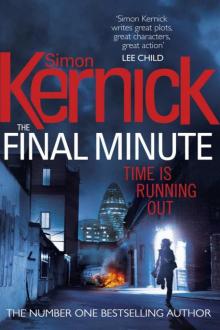 The Final Minute
The Final Minute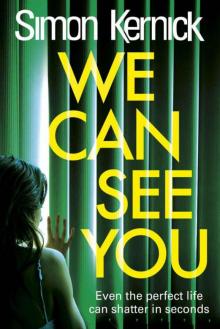 We Can See You
We Can See You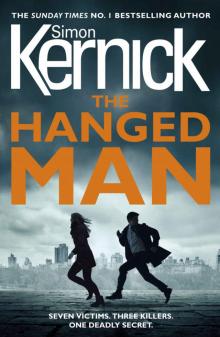 The Hanged Man (Bone Field 2)
The Hanged Man (Bone Field 2) Dead Man's Gift 02 - Last Night
Dead Man's Gift 02 - Last Night Dead Man's Gift and Other Stories
Dead Man's Gift and Other Stories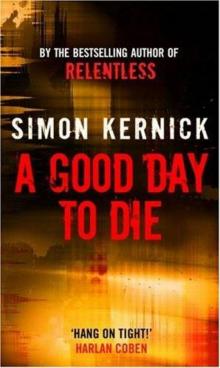 A Good Day To Die
A Good Day To Die The Last 10 Seconds
The Last 10 Seconds The Murder Exchange
The Murder Exchange The Bone Field
The Bone Field The Hanged Man
The Hanged Man Target
Target The Last 10 Seconds: A Novel
The Last 10 Seconds: A Novel Relentless: A Novel
Relentless: A Novel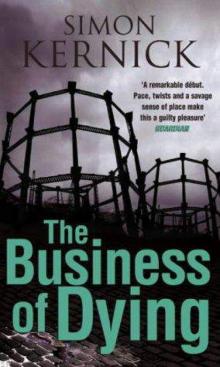 The Business Of Dying
The Business Of Dying Die Twice
Die Twice Flytrap
Flytrap Stay Alive
Stay Alive Dead Man's Gift 03 - Today
Dead Man's Gift 03 - Today The Payback
The Payback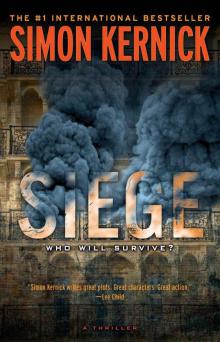 Siege: A Thriller
Siege: A Thriller The Crime Trade
The Crime Trade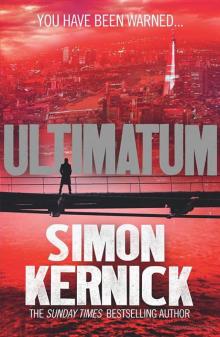 Ultimatum
Ultimatum